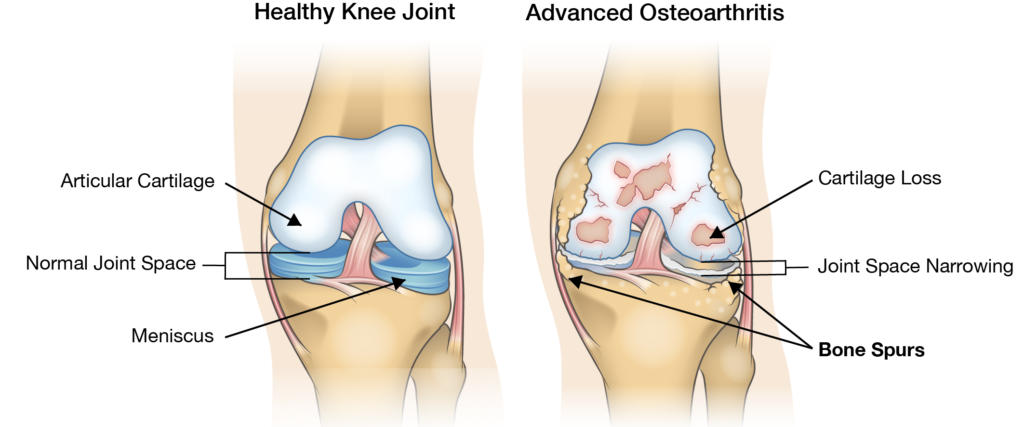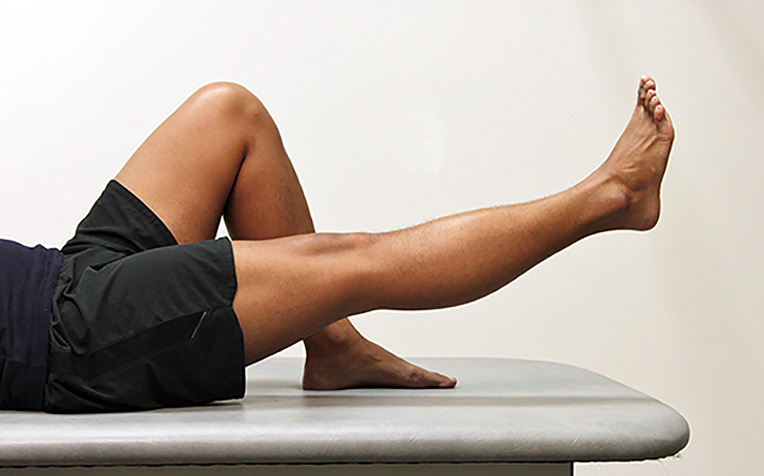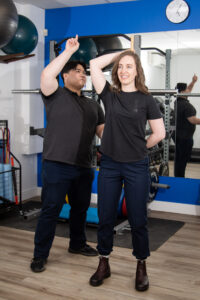If we had a dollar for every time we heard ‘I had an x ray of my knee and the doctor says I have arthritis’, we would certainly have a few dollars in our pockets. It’s a common story we hear, and can be very concerning for patients who have knee pain and are unsure what that means for them. This is why we have written this blog, to help you understand what is happening in your knee when you are told you have arthritis, and what you can do about it.
Knee arthritis – what is it?
When you are told you have knee arthritis, it most likely means you have a certain type of arthritis, known as osteoarthritis (or OA for short). This is a type of arthritis which is caused by wear and tear of the cartilage which sits between the bones that make up your knee joint. The job of the cartilage is to protect and cushion the bones in your knee. Over time, the cartilage in your knee can gradually wear away due to wear and tear, which can lead to the bones in your knee joint rubbing against each other. Knee inflammation, stiffness, pain and a loss of movement in the knee can be consequences of this. The space in your knee joint may eventually narrow, and extra bone growth, known as ‘bone spurs’, can form.
There are two main types of OA – primary and secondary. Primary OA is where there is no known cause of your arthritis, and secondary is where there is a known cause of the OA. Examples of causes of secondary OA include direct trauma to the knee (like an accident or a surgery), obesity and congenital reasons.
One interesting fact about knee OA is that you can have it and be completely unaware that you do. One study found that only 15% of people who were diagnosed with knee OA via x ray had any symptoms at all, which means that most people who have knee OA don’t even know they have it. It also means that even if you have an x ray and it shows you have knee OA, it doesn’t necessarily mean that this is the cause of your pain or problems.

What are the secondary effects of knee osteoarthritis?
We now know that knee osteoarthritis is damage to the cartilage that covers the bones which are in your knee joint, and that damage to this cartilage can cause pain and inflammation to the knee joint. In severe cases, this can start a vicious cycle where a patients knee can start to hurt, so they begin to move differently or favor that leg by using their other side more.
While this may help to decrease the pain the patient feels in that moment, it can lead to important muscles weakening and tightening around the knee and the hip. When muscles become weak, they in themselves can cause knee and/or hip pain. A weak muscle also can not provide adequate support to the knee joint, which in turn can lead to further pain and progression of the knee OA.
Finally, when an individual has significant knee OA, they may not want to move around as much, and this increased immobility can further add to the muscle weakness and tightness. It also could lead to the remaining knee cartilage becoming weaker, as studies show that weight bearing (i.e. standing and walking) help to strengthen knee cartilage, and that prolonged non-weight bearing (i.e. sitting more because your knee hurts) may lead to the cartilage becoming weaker, and thus exacerbating the knee OA cycle.
If I have knee osteoarthritis, what can I do about it?
One thing to be aware of is that once the joint cartilage is damaged or destroyed, it cannot be regenerated or replaced. Of course, the most well known ‘cure’ for significant knee OA is a total knee replacement; however, most people who have knee OA will NOT need this surgery, and more conservative methods (i.e. not surgery) will be advised to be undertaken first.

Research shows that the primary treatment option for knee osteoarthritis is actually an exercise program prescribed by a physiotherapist. The goal of the physiotherapy program is to provide you with both strengthening and stretching exercises, which will aim to improve the movement of your knee, increase the strength and flexibility of the muscles in your leg, and to help with activity modification to help you continue your day to day activities to the best of your ability. All of these interventions will have the aim of improving your knees strength and flexibility, both of which have been shown to help decrease pain with knee OA.
Another important thing to consider is that when an individual has knee OA, it is possible that some of their pain symptoms (and sometimes a lot of them!) are being caused by the muscular tightness and weakness around the knee, rather than the knee OA itself. If the physiotherapist can help resolve your muscular issues, often by using a combination of exercise therapy and manual therapy, such as IMS or the graston technique, quite often it can improve your quality of life by decreasing your pain and increasing your mobility.
Knee osteoarthritis can make your life challenging, but there are certainly things you can be doing to help improve the health of your knee and allow you to complete the activities you would like to. If you would like a professional opinion about your knee and some treatment to help improve your situation, you can book online or call our clinic at 250-493-1152 to arrange to see one of our registered physiotherapists.






